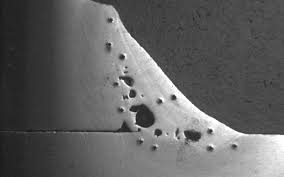Discover What is Porosity in Welding and Its Impact on Structural Honesty
Discover What is Porosity in Welding and Its Impact on Structural Honesty
Blog Article
The Science Behind Porosity: A Comprehensive Guide for Welders and Fabricators
Comprehending the elaborate devices behind porosity in welding is crucial for welders and makers striving for flawless workmanship. From the composition of the base products to the ins and outs of the welding process itself, a wide range of variables conspire to either worsen or reduce the existence of porosity.
Comprehending Porosity in Welding
FIRST SENTENCE:
Exam of porosity in welding reveals vital understandings into the stability and quality of the weld joint. Porosity, identified by the visibility of tooth cavities or voids within the weld metal, is an usual worry in welding procedures. These spaces, if not correctly addressed, can jeopardize the architectural honesty and mechanical properties of the weld, resulting in potential failings in the finished product.

To spot and evaluate porosity, non-destructive testing approaches such as ultrasonic screening or X-ray assessment are usually utilized. These strategies permit the recognition of internal issues without endangering the integrity of the weld. By examining the size, shape, and distribution of porosity within a weld, welders can make educated choices to improve their welding processes and accomplish sounder weld joints.

Elements Affecting Porosity Formation
The occurrence of porosity in welding is affected by a myriad of variables, ranging from gas protecting efficiency to the complexities of welding criterion settings. One vital factor adding to porosity formation is insufficient gas protecting. When the securing gas, commonly argon or CO2, is not effectively covering the weld swimming pool, climatic gases like oxygen and nitrogen can contaminate the liquified metal, causing porosity. Additionally, the tidiness of the base products plays a substantial duty. Contaminants such as rust, oil, or moisture can vaporize throughout welding, producing gas pockets within the weld. Welding criteria, consisting of voltage, current, take a trip speed, and electrode kind, also impact porosity formation. Utilizing incorrect settings can create extreme spatter or warm input, which in turn can cause porosity. The welding strategy employed, such as gas metal arc welding (GMAW) or shielded steel arc welding (SMAW), can influence porosity formation due to variations in heat distribution and gas protection. Comprehending and controlling these aspects are necessary for minimizing porosity in welding procedures.
Impacts of Porosity on Weld High Quality
Porosity formation significantly compromises the architectural honesty and mechanical properties of bonded joints. When porosity is existing in a weld, it develops voids or dental caries within the material, lowering the general strength of the joint. These spaces serve as anxiety concentration points, making the weld a lot more prone to splitting and failure under load. The presence of porosity also weakens the weld's resistance to corrosion, as the entraped air or gases within the spaces can respond with the surrounding setting, bring about degradation with time. Additionally, porosity can prevent the weld's ability to stand up to pressure or effect, more threatening the total top quality and integrity of the bonded framework. In critical applications such as aerospace, auto, or structural building and constructions, where safety and sturdiness are vital, the detrimental impacts of porosity on weld quality can have serious consequences, stressing the importance of this website reducing porosity through proper welding techniques and procedures.
Methods to Decrease Porosity
Furthermore, utilizing the proper check it out welding criteria, such as the right voltage, existing, and take a trip rate, is important in preventing porosity. Maintaining a constant arc size and angle during welding likewise helps decrease the probability of porosity.

Utilizing the ideal welding technique, such as back-stepping or using a weaving motion, can also aid distribute heat evenly and reduce the possibilities of porosity formation. By carrying out these techniques, welders can effectively minimize porosity and produce high-grade welded joints.

Advanced Solutions for Porosity Control
Applying advanced modern technologies and cutting-edge methods plays an essential function in accomplishing premium control over porosity in welding procedures. Furthermore, using advanced welding techniques such as pulsed MIG welding or modified ambience welding can additionally assist alleviate porosity issues.
One more advanced service involves making use of innovative welding devices. As an example, making use of equipment with integrated features like waveform control and sophisticated source of power can enhance weld high quality and lower porosity threats. Furthermore, the implementation of automated welding systems with accurate control over specifications can substantially minimize porosity flaws.
Furthermore, integrating innovative monitoring and inspection modern technologies such as real-time X-ray imaging or automated ultrasonic testing can help in identifying porosity early in the welding procedure, enabling prompt restorative actions. On the whole, integrating these advanced solutions can significantly enhance porosity control and boost the general quality of bonded elements.
Final Thought
In conclusion, recognizing the scientific research behind porosity in welding is necessary for welders look at this web-site and makers to produce top quality welds - What is Porosity. Advanced solutions for porosity control can additionally improve the welding procedure and make certain a strong and trustworthy weld.
Report this page